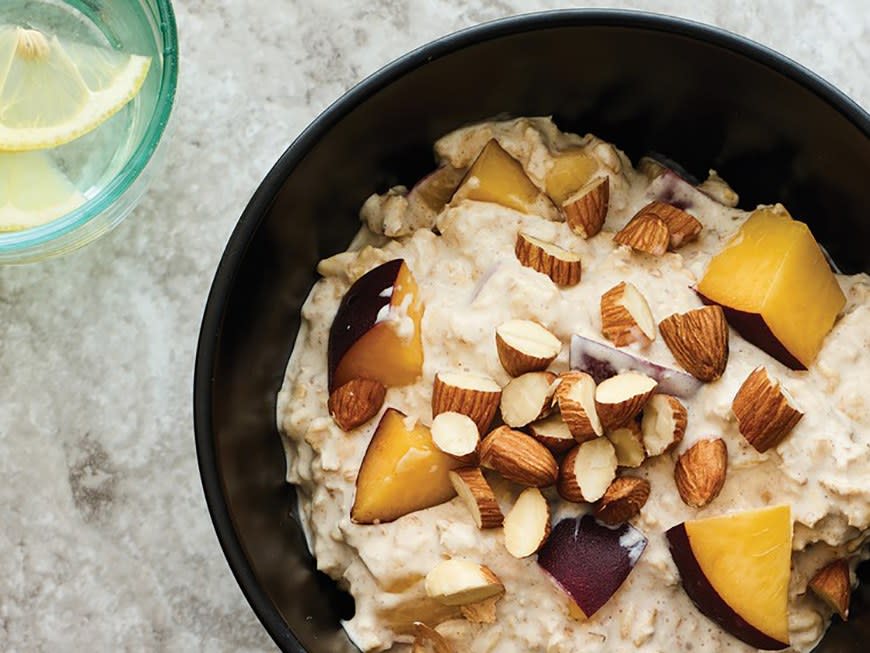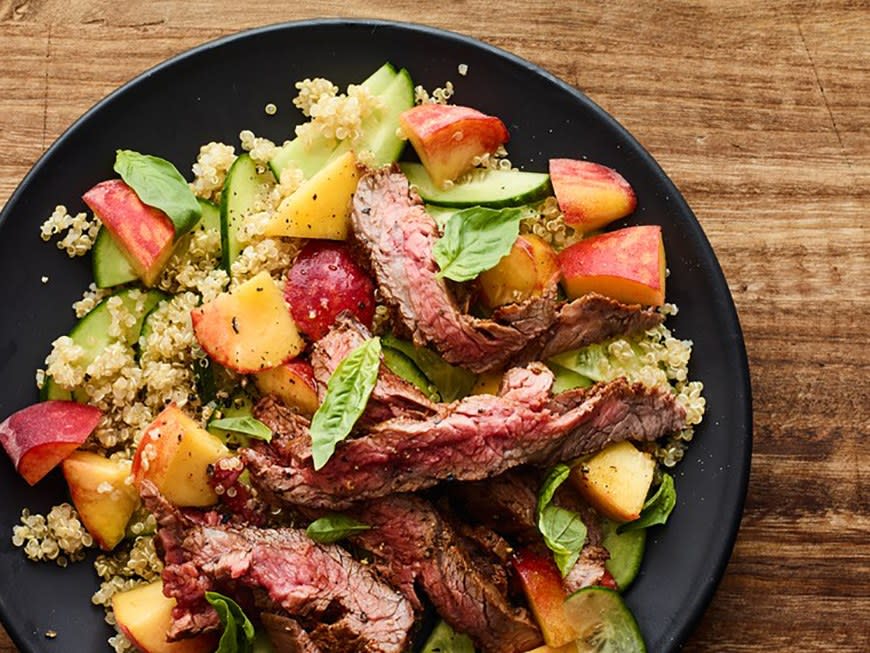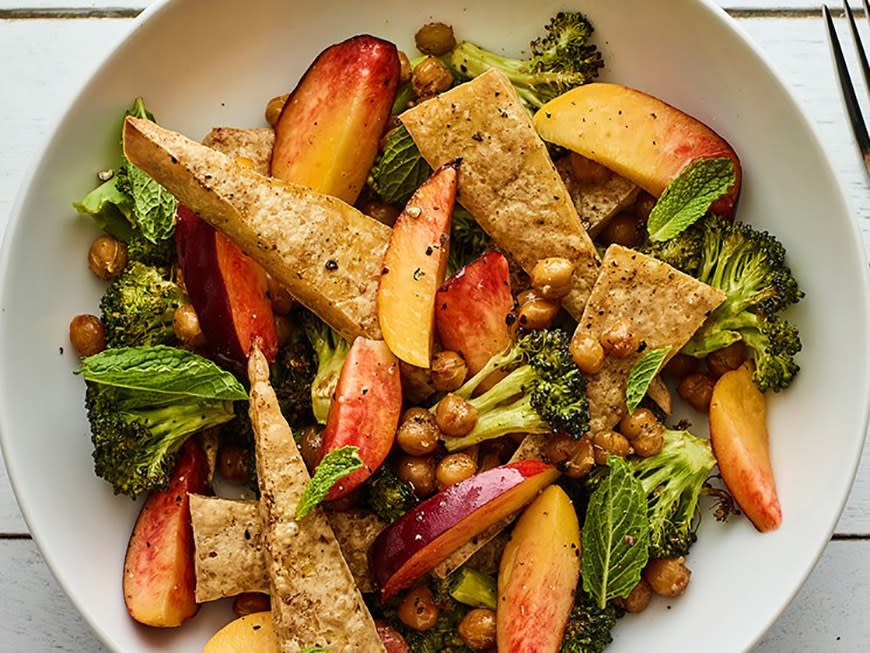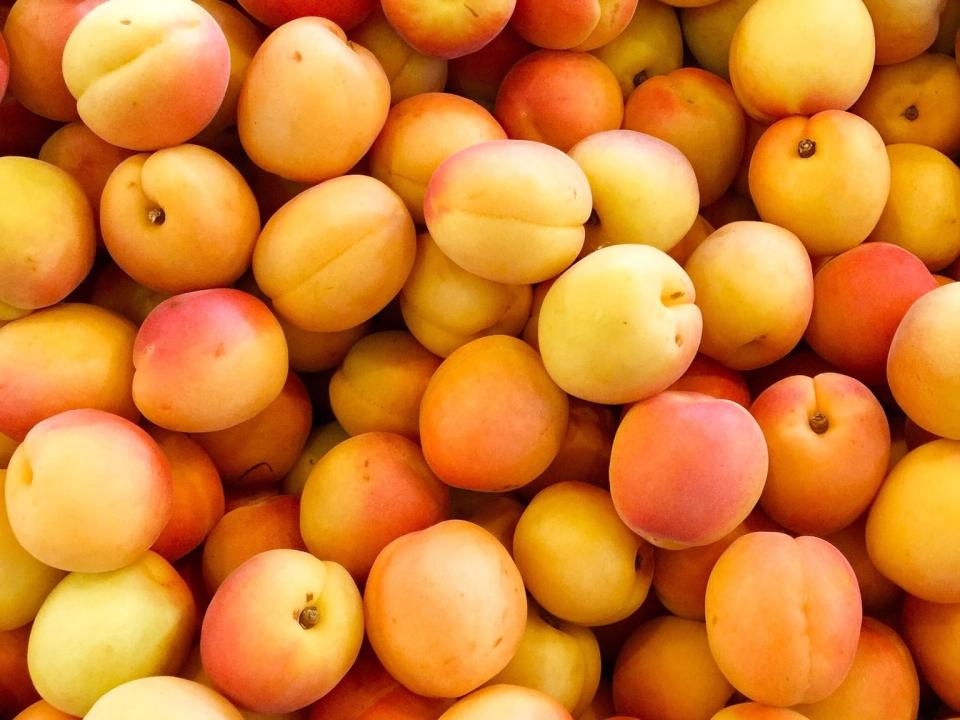Here’s How to Pick the Best Peaches Every Single Time
During the summer, I maintain a steady diet of peaches, peaches, and more peaches. From May to September, the juicy stone fruit is in season and ripe for the picking—at least, usually. Every now and then, I accidentally grab one that looks fine on the outside, but is mealy, watery, and decidedly flavorless on the inside—definitely not the James and the Giant Peach fantasy I'm trying to realize.
Sometimes it's easy to tell if a peach is bad—like, if it has a big, giant bruise—but other times, your guess is as good as mine. Of course, peaches aren't exactly the cheapest fruit at the store, and I'd rather not waste money if there's a way to avoid it. Luckily enough, there is! Here, Katy Green, produce field inspector at Whole Foods Market, tells SELF all about what you should watch out for when buying peaches, so you never wind up with a peach that isn't peachy.
There are tons of different peaches out there, but the most common varieties stick to the same rules.
Even though Green says there are literally hundreds of varieties of peaches, they'll all exhibit the same basic maturity indicators.
But before we get to those, let's talk peach varieties. Rather than get into specific breeds (because there are so many), Green focuses on the larger categories of peaches, such as color and texture. The most common color categories are yellow peaches and white peaches. Yellow peaches are more acidic and have a complex flavor profile, while white peaches are milder in flavor.
As for the texture categories, Green says that what you're likely to encounter will be either a cling peach or a canning peach. Cling peaches are thus named because their flesh sticks to the pit (these are the kinds of peaches you should snack on). And canning peaches are ideal for canning because, unlike cling peaches, their flesh doesn't stick to the pit, making them easier to prep. The color categories always overlap with the texture categories, so you'll see everything from yellow cling peaches to white cling peaches to white canning peaches and so on.
Look for color before anything else.
"First and foremost, look for color as an indicator of maturity," says Green. Peaches shouldn't have more than a little bit of green on the shoulders (the part on top that makes them look like the butt emoji), and there should be a consistent blush coloring everywhere else, she explains. "Most varieties, including popular white and yellow peaches, will fall into these basic parameters."
If you spot a little light speckling on the skin, that's actually a good thing.
According to Green, you may occasionally notice light speckling on a peach. That's great news, she says, as it can indicate a higher sugar content, which means a sweeter peach.
Peaches shouldn't be too big or too small—they should be just right.
Green says that if a peach is too big or too small, the sugar to acid ratio gets thrown off, which means they're usually too sweet or nowhere near sweet enough. To quote Goldilocks, they should be just right, and just right happens to be about the size of a baseball.
Firmness isn't bad, because your peaches will get softer (and sweeter!).
Unlike things like melons or tomatoes, peaches will continue to ripen after they've been harvested, says Green. Over time, the sugar levels of peaches don't technically increase, but the acid levels do decrease, which will ultimately result in something sweeter. But don't wait too long to eat them, she warns, because then they'll become mealy and too low in acid to really be flavorful.
Now, it's time to start cooking with your peaches. Use these recipes to get started.
Peaches and Cream Overnight Oats

This is exactly what you want to eat in the morning, and it'll be ready to go when you wake up. Get the recipe here.
Steak Salad With Cucumber, Peach, and Quinoa

These salad is the perfect combination of sweet, nutty, and crunchy. Get the recipe here.
Sheet Pan Vegetarian Summer Bowl

You can make this perfect, summer meal entirely on one sheet pan. Get the recipe here.


